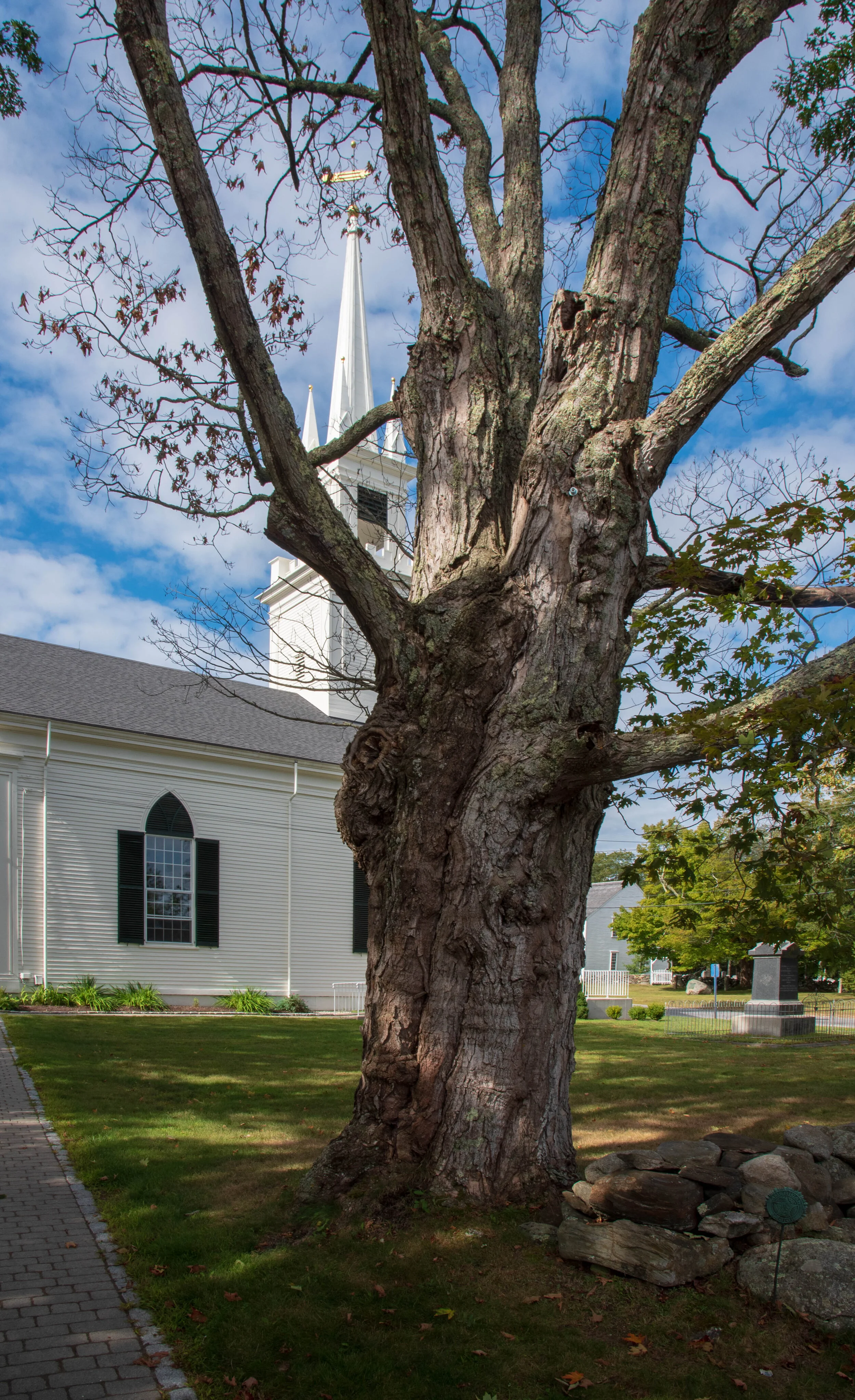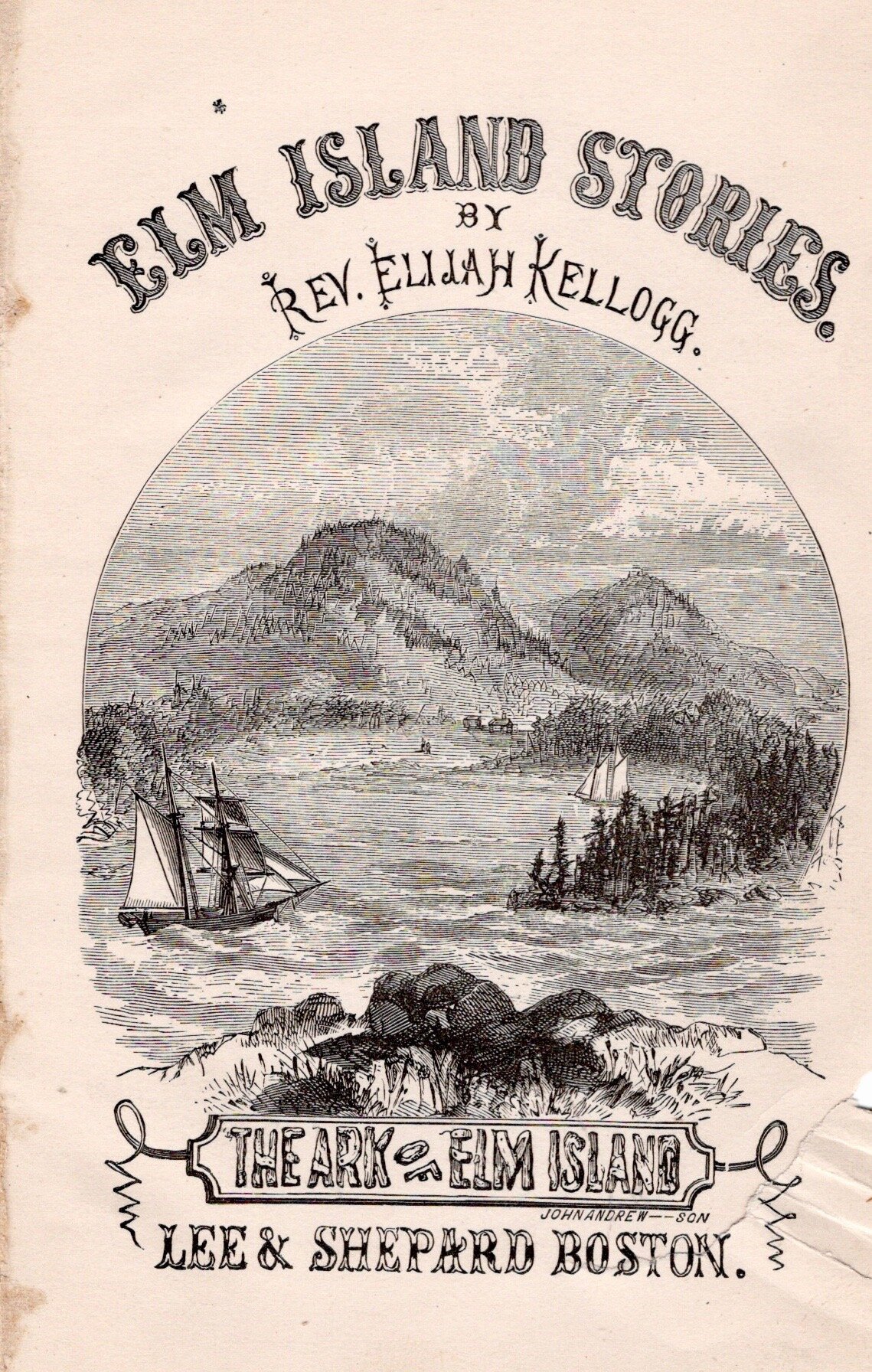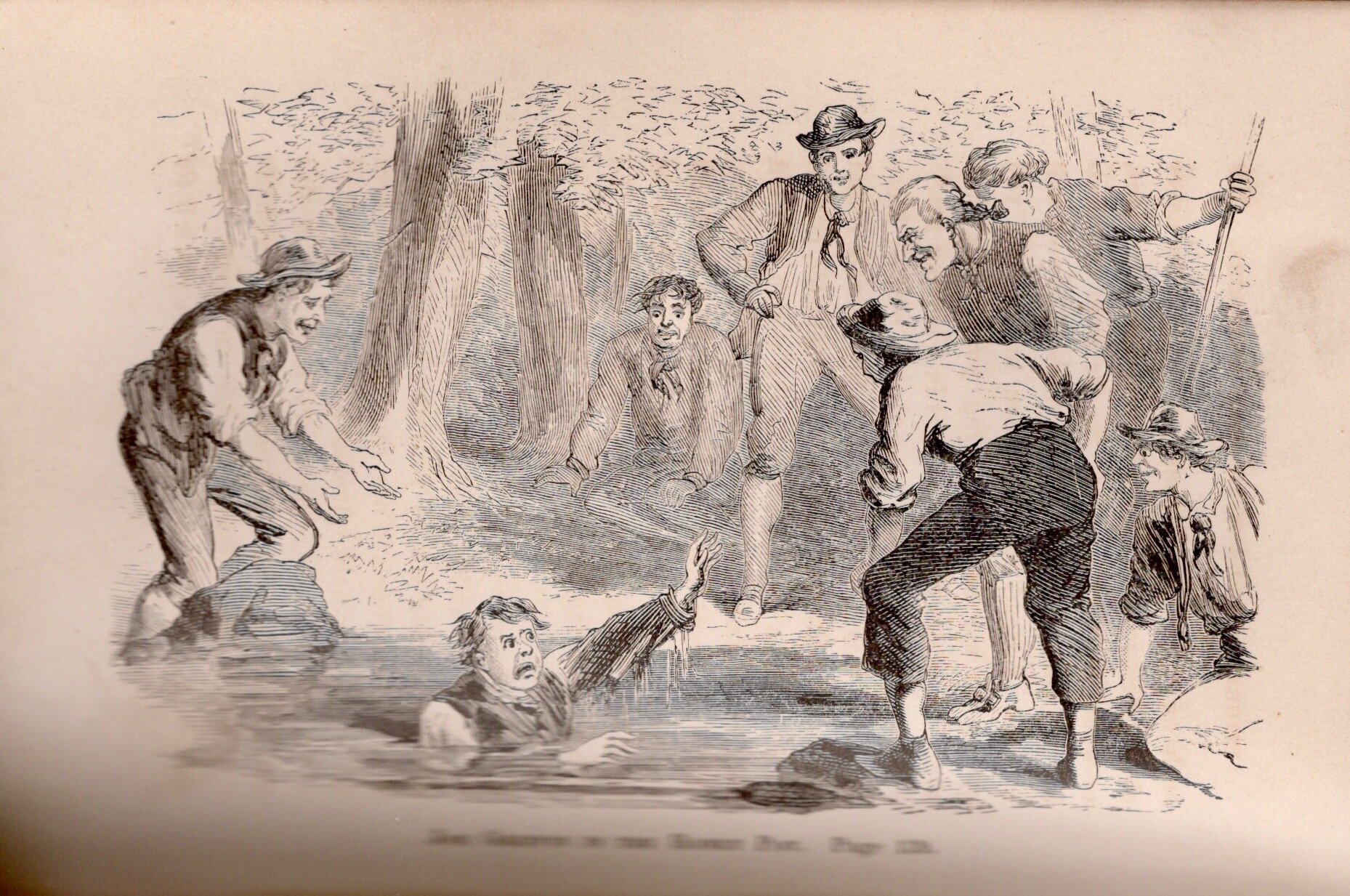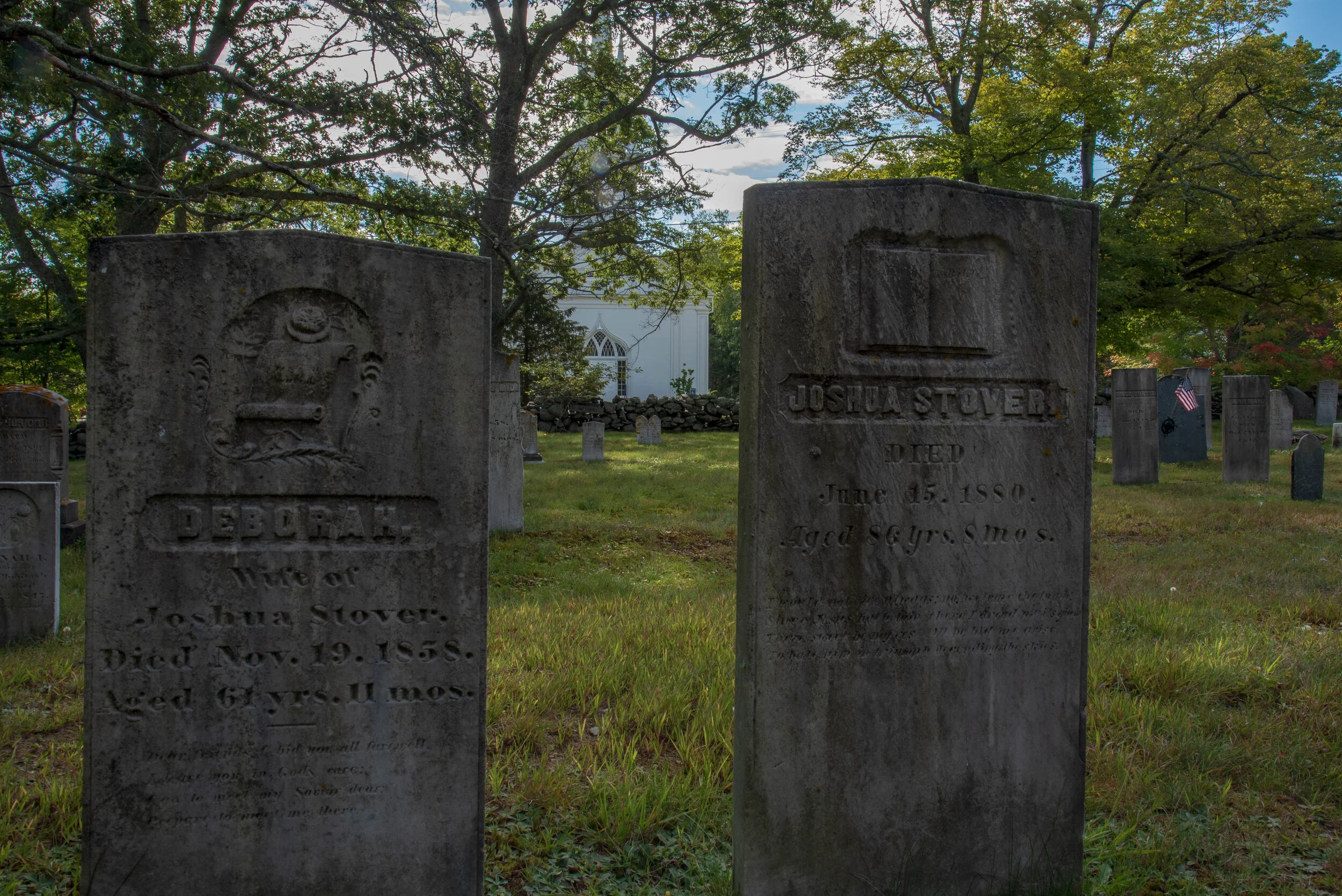“Where is Elm Island, Mr. Kellogg?”
“Oh, I made that Island out of my imagination for the story. You know it’s pretty hard finding an island on the Maine coast bearing northwest from the mainland. Still, notwithstanding that fact, I know at least half a dozen islands are pointed out as the suppositious place where Lion Ben and the boys lived and labored.”
For most people around these parts the name Elijah Kellogg evokes the memory of a family wedding, drives down to the Dolphin Marina, or the funeral of a friend. It’s that quaint church in Harpswell, on the neck, just opposite an older meeting house with the ancient burial ground. On the left not long after the Lookout Point Road.
That wasn’t always the case however, Kellogg was a celebrity of sorts in the 19th century. Not long before Kellogg passed on in 1901 he was visited by another then renowned Mainer, Holman Day. Day was putting together a retrospective on Kellogg’s career. His piece, which includes the quoted exchange about Elm Island, would wend its way around for a couple of decades before landing in Maine, My State, a 1919 publication intended as a reader for Maine’s primary schools. Consider how more recent figures of Maine children’s literature—Robert McCloskey, E.B.White, or Barbara Cooney—are lauded now.
The Church’s website itself tells us the, “Reverend Elijah Kellogg was called as Pastor on April 25,1844 and installed on June 18, 1844. So began an affiliation that lasted, though not without interruptions, until Reverend Kellogg's death on March 17, 1901. The Harpswell Centre Congregational Church was renamed in his honor and is now known as The Elijah Kellogg Church, Congregational.” A substantial monument to the man dominates the church yard; its inscription includes, “A lover of the Sea and the sailor and a sympathetic friend of boys, for whom he wrote many stories which have made his name and memory dear to them everywhere.”
But for the most part “who was Elijah Kellogg?” Is a question that doesn’t get asked much outside of his old stomping grounds.
Kellogg wrote five different series of stories. The Elm Island series is what captured Holman Day’s attention, and Elm Island was the first of Kellogg’s five series, published by Lee & Shepard of Boston between 1869 and 1871, It’s also what first caught my attention as I have three first editions: The Ark, Hardscrabble, and Lion Ben, the first of the series of six different books.
Three of the six titles of the Elm Island Stories. They are often seen as “Lion Ben of Elm Island,” or “The Ark of Elm Island.”
The engravings throughout the text and including the frontispieces are by John Andrew & Son of Boston, which, among other great works it produced, was responsible for the engraving of the first eleven volumes of Edward Sheriff Curtis’s monumental work, The North American Indian. According to one source, John Andrew & Son opened in 1869, the year Lion Ben, Kellogg’s first in the Elm Island series was published. According to another source the firm opened for business in 1852. Both sources make it clear that the book publishing business of the time involved a significant number of reconfigurations of business models and relationships among the shops responsible for different parts of book publishing. Within one building might be several business each devoted to one of the constituent parts of getting a book to market, typesetting and printing in one shop, engraving in another, and binding handled by yet a third.
Elm Island as Kellogg imagined it might not have been a real place when Holman interviewed Kellogg, but the Maine Island Registry does list Elms Islands as among Maine’s 4600 or so islands. The pair of little islands are even in Harpswell, just a shade west of Orr’s Island but a good distance by water from Kellogg’s neighborhood on the neck. Wheeler’s History of Brunswick, Topsham and Harpswell first published in 1878 also notes an Elm Island consistent in location with the Elm Island of the Maine Island Registry: “east of the lower part of Orr’s Island.” But these little Islands are much smaller than the three mile by two mile dimensions of Kellogg’s imagined Elm Island. Six square miles would comprise an island of some 3840 acres, half the size of Isle au Haut. The Elms are listed at just half an acre a piece, and are much as Kellogg described countless little islands throughout the bay in the opening pages of Lion Ben, “a mere patch of rock and turf, fringed with the white foam of the breakers.”
A travelogue of the era, Scenic Gems of Maine, published in 1898 by Geo W. Morris of Portland, stated with authority, but no attribution, that “Ragged Island, midway between Bailey’s and Small Point Harbor, is pointed out as the Elm Island where “Lion Ben,” and other homely heroes portrayed by Elijah Kellogg had their imaginary being.” Ragged is a good sized island of about 75 acres, and has had its share of literary glory as the seasonal home of Edna St. Vincent Millay from the 1930s until her death in 1950, but it is still far smaller than Kellogg’s Elm Island.
But this, as Kellogg reported to Holman Day with his quizzical smile is just suppositious.
(See Abebooks.com for listing of these three titles along with many others)
There are a lot of Stovers in the graveyard across the street from the Elijah Kellogg Church. Unlike Elm Island, the. Stover’s gave their name to a very real place in Harpswell, Stover’s Point. The dates of death of this pair make it likely that Kellogg would have known them as parishioners; perhaps he presided over their funerals.





